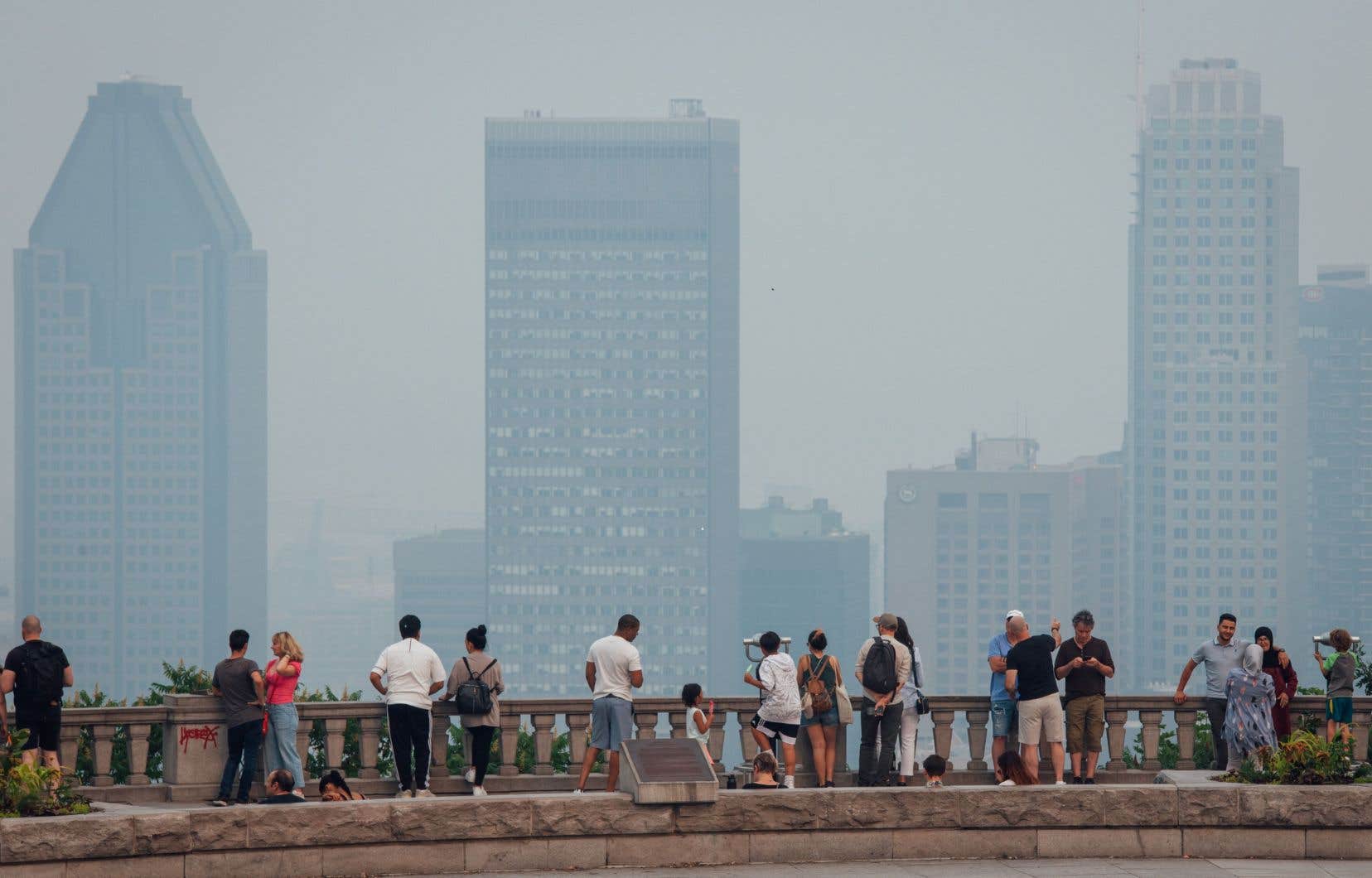For once, there was good news on all fronts on Monday regarding the wildfires and their impact across the province. Abundant rains have begun to fall on Témiscamingue and are heading towards the critical areas of Abitibi and Nord-du-Québec, while air quality should recover in the south of the province during the the next few hours.
“The situation is already improving in Estrie, where the air quality has returned to good,” said meteorologist Jean-Philippe Bégin in an interview with The Canadian Press Monday.
Fine particles knocked down and repelled
It is the combination of two factors that will restore southern Quebec’s air quality: rain, which brings fine particles to the ground, and especially the rising winds from the southeast, which will repel these particles. fine to the northwest.
“Air quality will improve everywhere,” says the meteorologist. Estrie is the first since the winds come from the South-East, but the winds have already shifted in Montérégie and this will be the case for the entire St. Lawrence Valley. »
“The particles are very fine ash. The rain helps to clean the air and to finish, we have to wait for the work of the South-East winds. »
The City of Montreal also announced at noon the reopening of its outdoor sports facilities and the resumption of its outdoor cultural activities from noon on Monday.
Abitibi and Nord-du-Québec: finally the rain
As for the sector in a state of emergency, “there is already quite a bit of rain in Témiscamingue and the system is rising to reach Val-d’Or and the rest of the sector. [lundi] afternoon, [lundi] evening and night from Monday to Tuesday. Rain will fall where there are the most intense fires until Wednesday, above 40 millimeters between tonight and Wednesday in several places. »
The only downside: precipitation will be weaker in the northwest, i.e. when approaching Baie-James, but it will be present in the sectors of Normetal, Lebel-sur-Quévillon and Chibougamau, then heading towards the east, in the Saguenay-Lac-Saint-Jean and Côte-Nord sectors.
“We could exceed fifty millimeters in places,” says Jean-Philippe Bégin, a forecast that will undoubtedly be music to the ears of hundreds of forest firefighters and thousands of evacuated citizens.
Longer term forecasts indicate that the sun will be back in critical areas from Wednesday to Friday, but all indications are that more rain is to be expected after that, although it is still early to project that too. far in terms of weather. One thing seems certain, however: “We are not talking about an extended period of hot and dry weather, but more of a few days, without extreme heat. »
Grounded tanker planes
This respite does not come too soon. The Society for the Protection of Forests Against Fire (SOPFEU) is deprived of one of its most powerful tools, while the smoke is so intense in the most critical sectors that most tankers and helicopters cannot combat the flames due to reduced visibility.
SOPFEU has identified 118 fires on the territory, i.e. 82 in the intensive zone, of which 29 are out of control, and 36 in the northern zone. The most disturbing fire remains that of Lebel-sur-Quévillon which, with its 380,000 hectares, represents an area equivalent to ten times that of the island of Montreal.
The fighting therefore takes place on the ground through the construction of firebreak trenches and preventive burning. However, the agreement that allowed the arrival of Spanish and Portuguese firefighters as reinforcements expires at the end of the week and Quebec is to conclude other agreements with additional external reinforcements.
Good news also awaited the residents evacuated from Opitciwan, who will be able to return to their homes on Tuesday.
